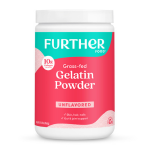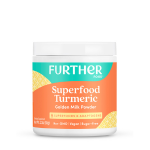We’ve all heard nutritionists and scientists – myself included! – discuss at length the numerous benefits that leafy greens have on your health. From power-packed spinach to fat-fighting greens, adding leafy greens to your diet can give your health and well-being a huge boost.
However, we don’t hear much about the not-so-healthy compound that occurs naturally in leafy greens – oxalates. To a certain level, oxalates are not rare or harmful to our bodies unless we happen to be sensitive to them. For the most part, issues only begin to arise when oxalates build up from the overconsumption of oxalate-rich foods.
At high levels, oxalates, or oxalic acid, limit the absorption of calcium, iron, and magnesium in the digestive tract. Simply put, they prevent your body from getting the most benefit from those essential minerals. Your kidneys may also suffer, as oxalate build-up has been linked to the formation of harmful and painful kidney stones. In fact, calcium oxalate stones account for anywhere from 75% to 86% of all stones formed.
One study measured the oxalate levels in some common leafy greens and other fruits and vegetables. Based on their findings, the top ten raw foods with the highest oxalate content (mean milligrams per 100 grams) are:
1. Amaranth: 1586 mg
2. Purslane: 1240 mg
3. Black tea: 1150 mg
4. Spinach: 970 mg
5. Orach: 900 mg
6. Rhubarb: 805 mg
7. Cocoa: 700 mg
8. Beet leaves: 610 mg
9. Sorrel: 500 mg
10. Red beetroot: 275 mg
If you suffer from kidney stones, it may be best to avoid these foods with high levels of oxalates. However, for the rest of us, there are ways to reap the benefits of high-oxalate vegetables without causing unhealthy oxalate build-up in the body.
Specifically, how you prepare your vegetables plays a dramatic role in the concentration of oxalates. The oxalate amounts listed above can be lowered simply by blanching your vegetables. To blanch vegetables, cook in a pot of boiling water for 4-6 minutes and submerge into ice water immediately after cooking.
Two studies compared the oxalate content of blanched vegetables to their raw counterparts with encouraging results: the oxalate content of the raw vegetables studied (spinach, beetroot, celeriac, and parsnip) was reduced by 30-40% when blanched.
While blanching was the most effective cooking method found, the studies also showed that pressure cooking and open pan cooking also reduced the oxalate content in the vegetables, although to lesser amounts. Drying vegetables had the opposite effect – the oxalate content of dried spinach was almost triple that of raw spinach!
Don’t let a fear of oxalates prevent you from eating the full spectrum of fruits and vegetables daily! There are a multitude of benefits to be gained from colorful vegetables. It’s simply important to be a smart cook and to eat a variety of foods – if you’re eating lots of veggies that you know are high in oxalates, try out one of the cooking methods mentioned above to minimize the risk of overloading your body with the compound. Your kidneys will thank you!
And, don't forget to check with your healthcare practitioner if you have specific questions about your sensitivity to oxalates.
References:
Mirmiran, P., et al. "Colors of fruits and vegetables and 3-year changes of cardiometabolic risk factors in adults: Tehran lipid and glucose study." European journal of clinical nutrition (2015).
Noonan, S. C., and G. P. Savage. "Oxalate content of foods and its effect on humans." Asia Pacific Journal of Clinical Nutrition 8 (1999): 64-74.
Kohri, Kenjiro, et al. "Biomolecular mechanism of urinary stone formation involving osteopontin." Urological research 40.6 (2012): 623-637.
Liu, Yu, et al. "Differentiating calcium oxalate and hydroxyapatite stones in vivo using dual-energy CT and urine supersaturation and pH values." Academic radiology 20.12 (2013): 1521-1525.
Noonan, S. C., and G. P. Savage. "Oxalate content of foods and its effect on humans." Asia Pacific Journal of Clinical Nutrition 8 (1999): 64-74.
Lisiewska, Zofia, et al. "Effect of processing and cooking on total and soluble oxalate content in frozen root vegetables prepared for consumption." (2011).
Virginia, P., et al. "Effect of Cooking and Processing Methods on Oxalate Content of Green Leafy Vegetables and Pulses." Asian Journal of Food and Agro-Industry 5.04 (2012): 311-314.
























